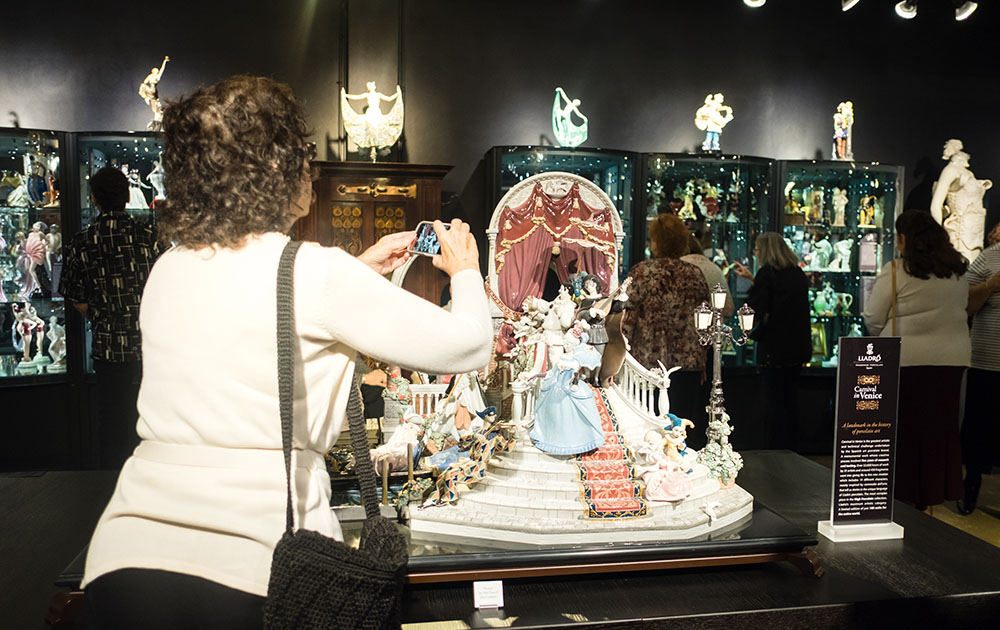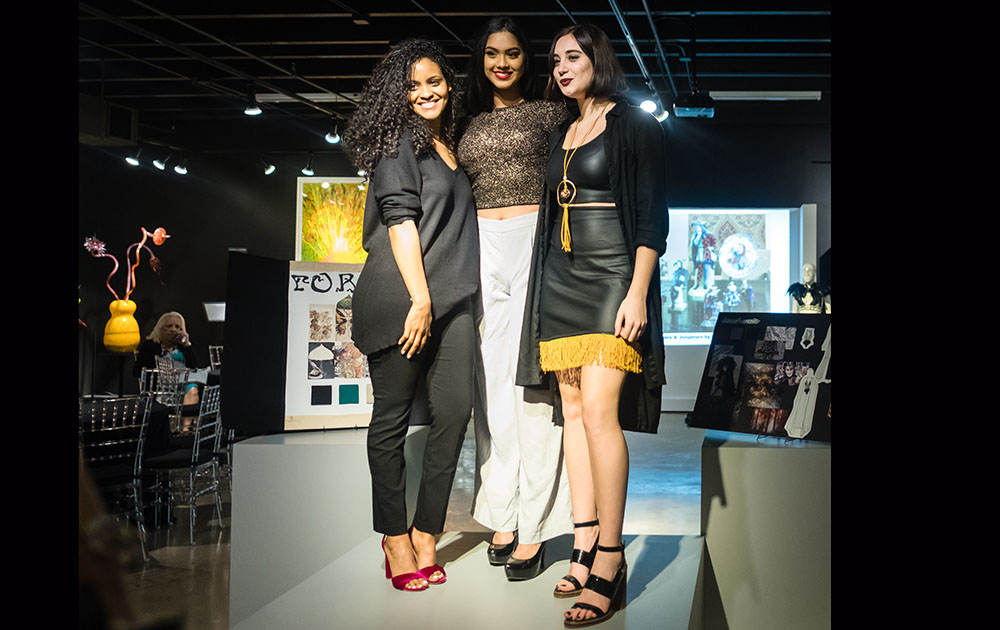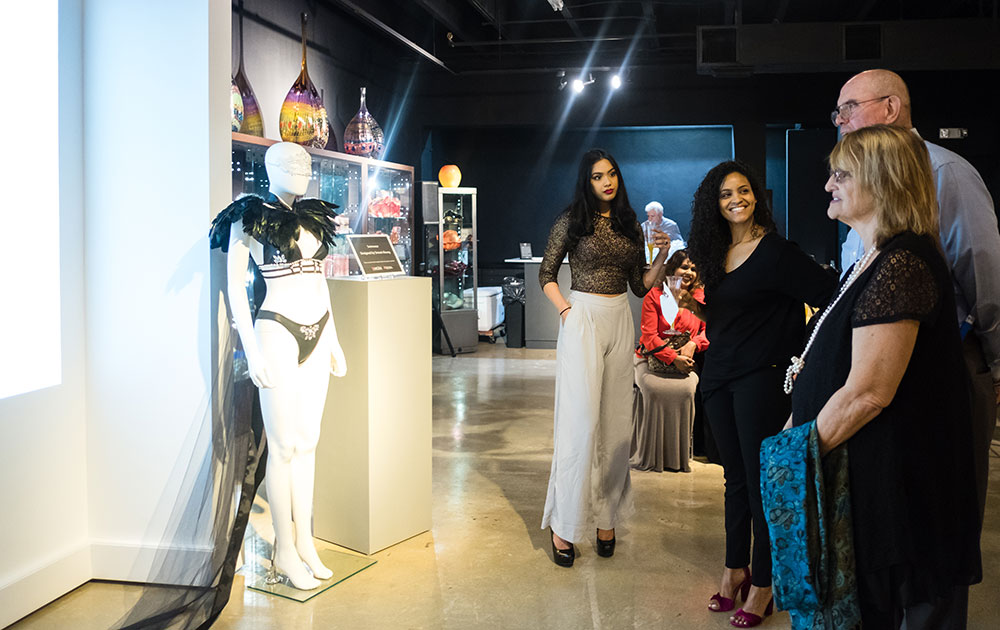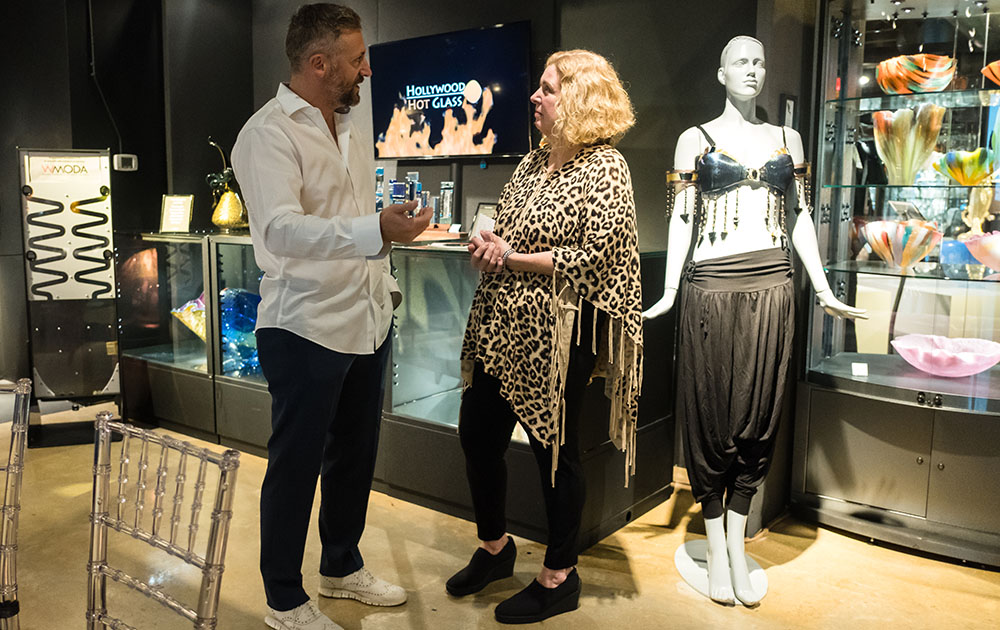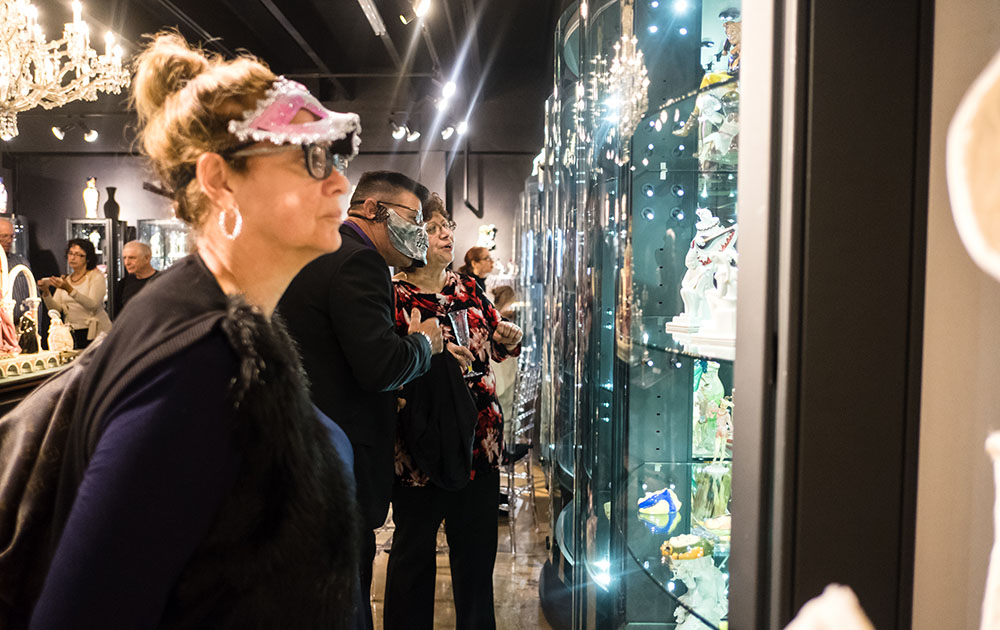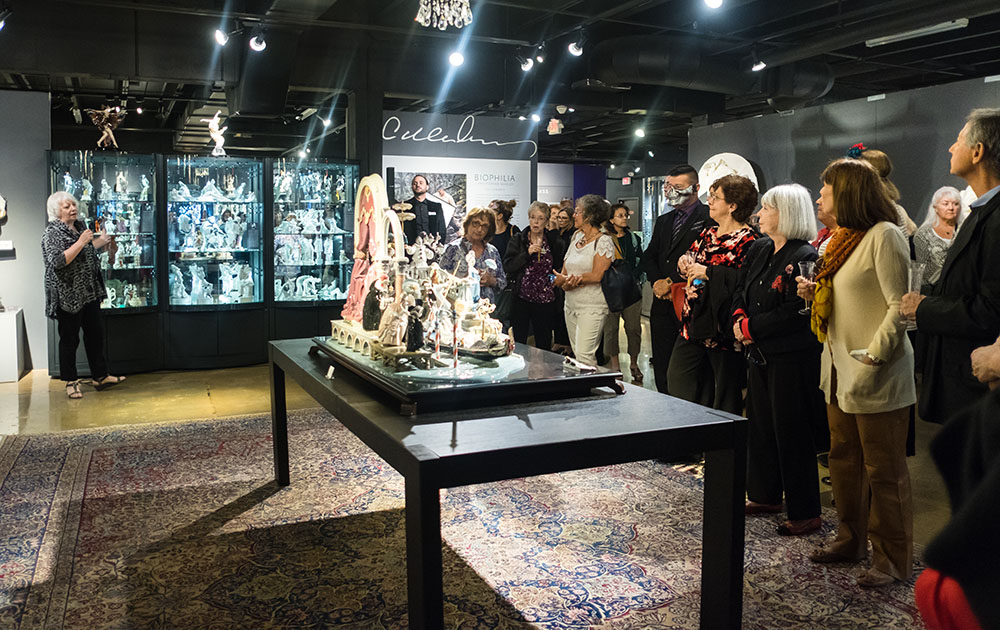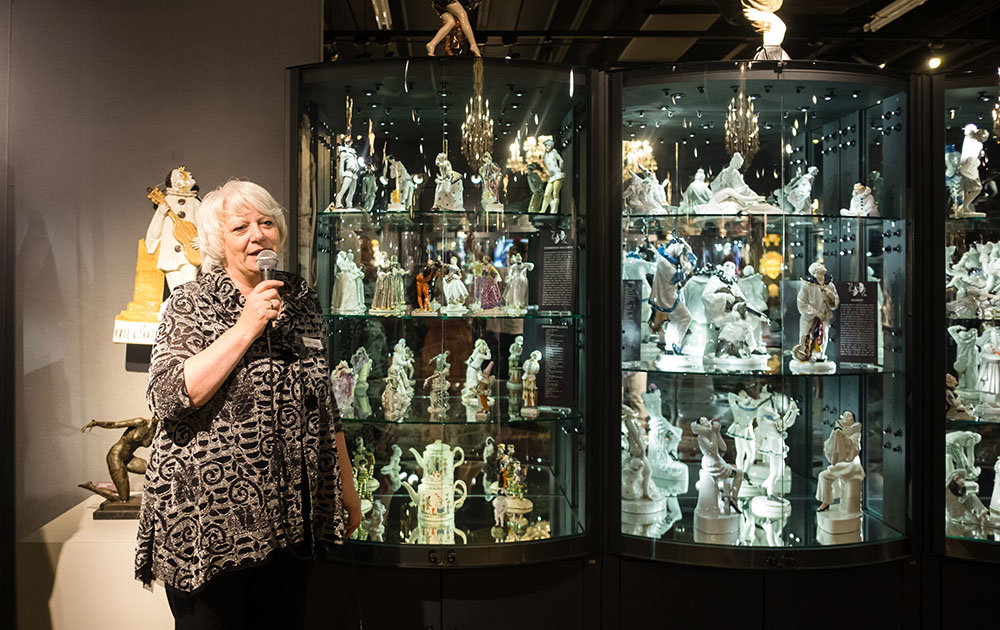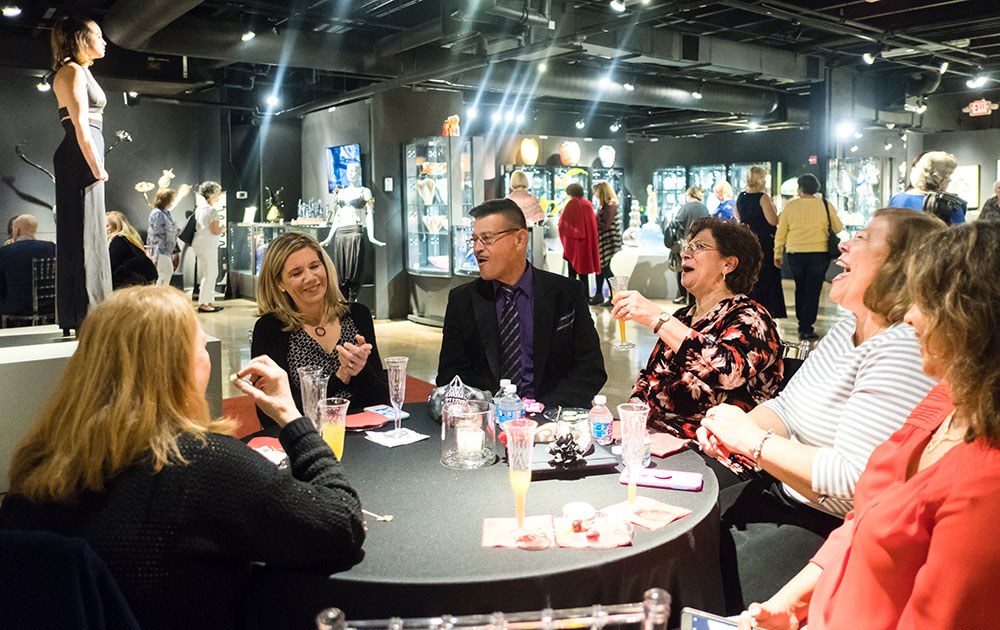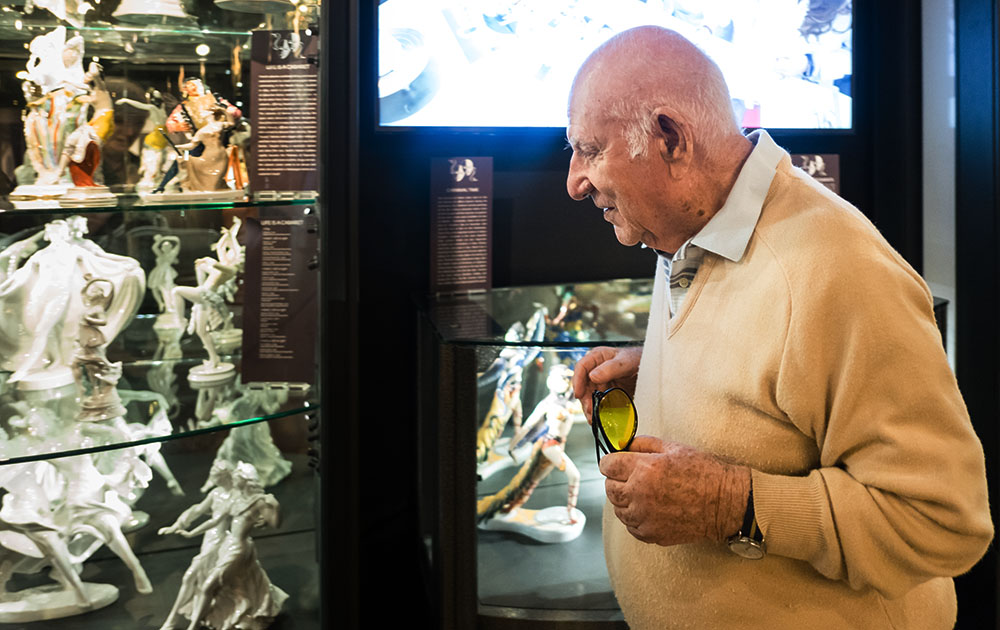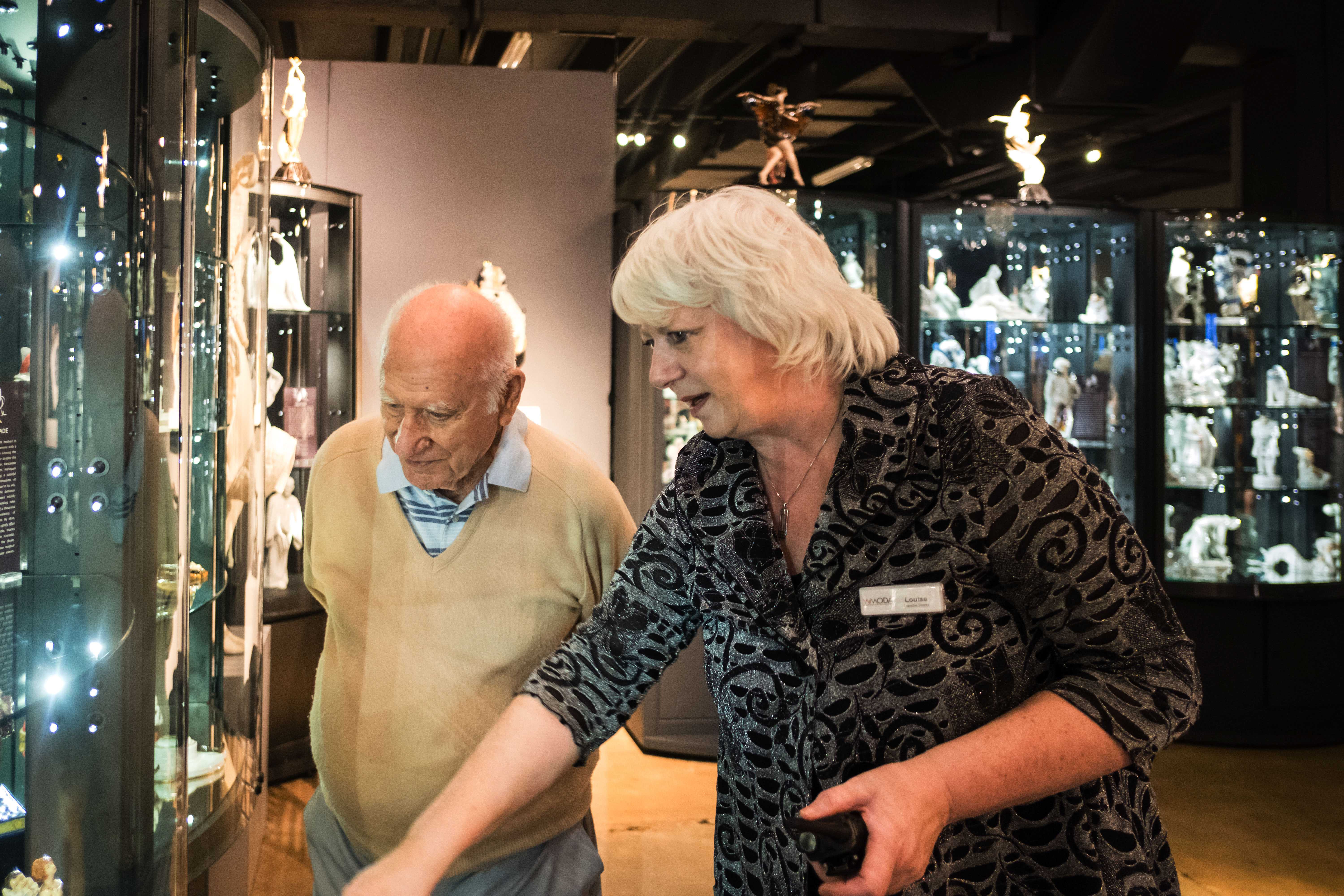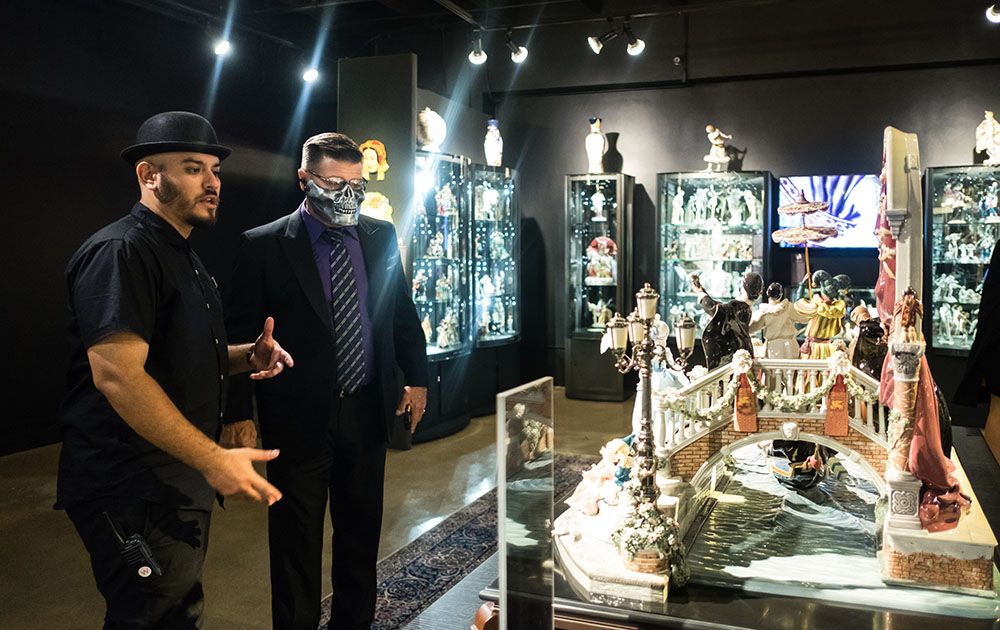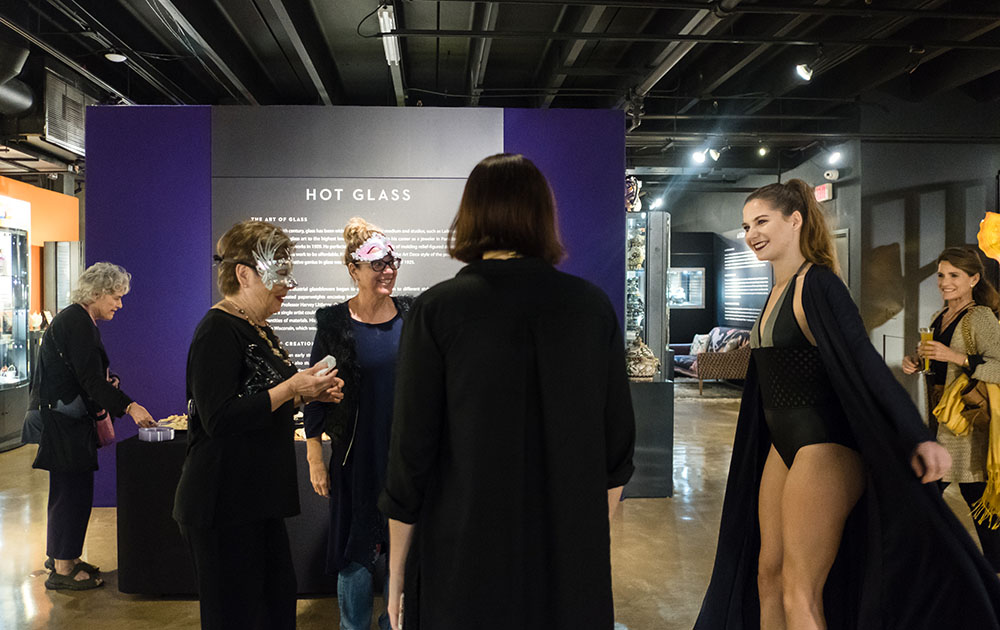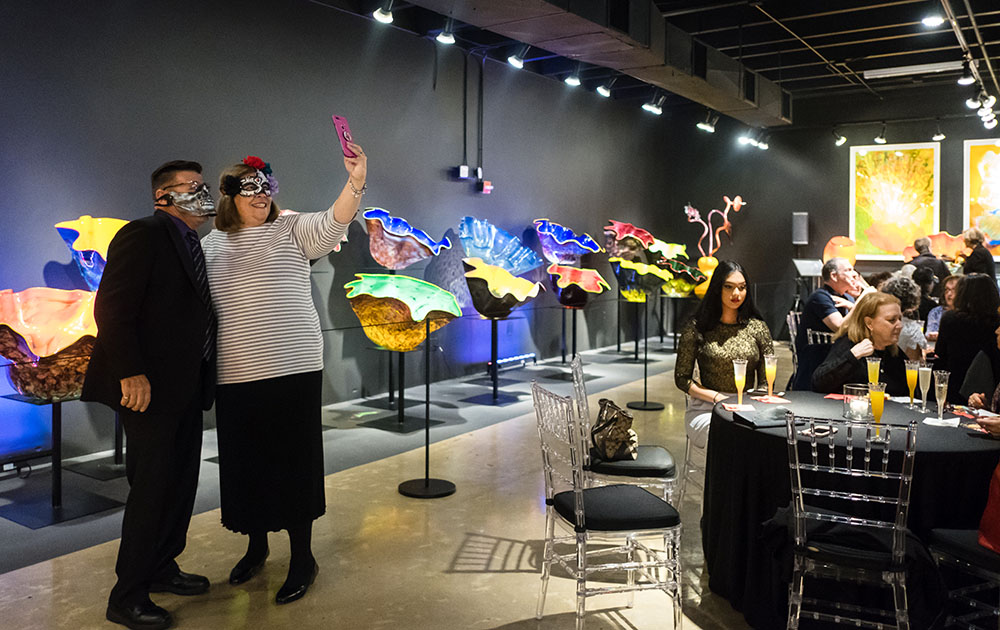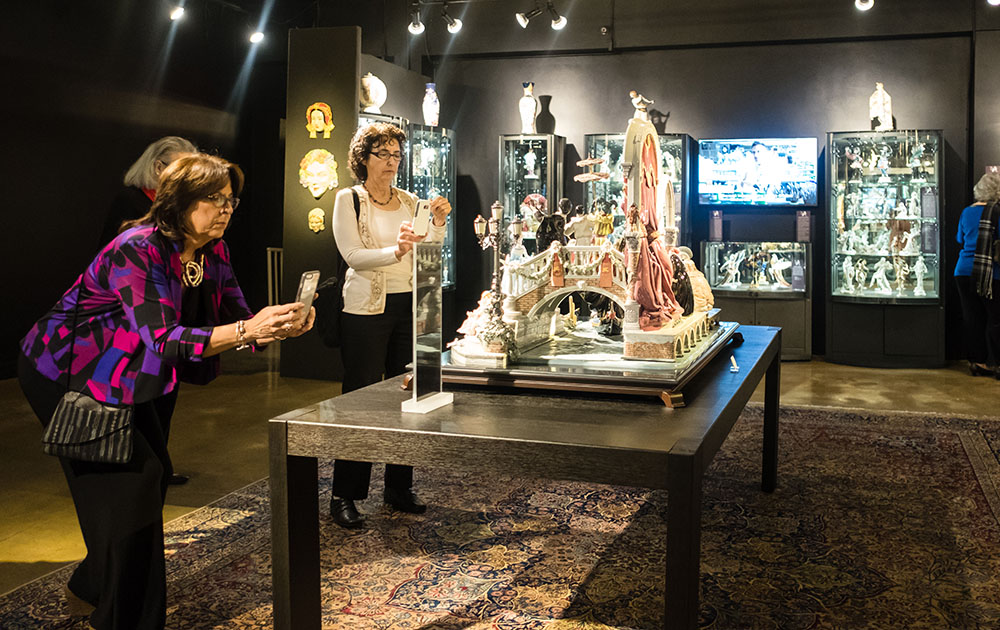Friends of WMODA were out in force for the opening of the Carnival & Cabaret exhibition on January 17th. Louise Irvine, Executive Director & Curator, introduced the exhibition and its spectacular centerpiece Carnival in Venice by Lladró. Our guest of honor was David Farin, who collected many of the porcelain revelers on display. Over a period of 20 years, David and his late wife Esther collected over 2,000 porcelain figures from European factories. Now in his nineties, David is delighted that his amazing collection has found a home at WMODA.
Fashion students from the Art Institute of Fort Lauderdale showed their new swimsuit collections which were inspired by Art Nouveau and Art Deco pieces in the Carnival & Cabaret exhibit. Sinead Aleung, Mercedes Vera, and Chanel Luna displayed their mood boards and dressed mannequins and live models in their new designs for the evening. Their teacher, Chelsea Rousso, is also a talented glass artist and she exhibited one of her new wearable glass outfits and wall masks inspired by the Venetian carnival.
Aspiring artists can attend Chelsea’s next fused glass class to make Venetian wall masks on Friday, February 9th in the Hot Glass Gallery at WMODA. Our next WMODA party is a Venetian Masquerade on Wednesday, February 7th. Enrique Campos from Lladró will talk about the largest porcelain masterpiece ever made by the Spanish company. We will also be opening a new exhibition The Magic of Murano, curated by Sergio Gnesin. Select pieces will be for sale to benefit educational programs at WMODA.
Photos by Kate Merrill
Related pages
Venetian Masquerade Event
Make Your Own Mask
Carnival in Venice
Carnival & Cabaret
Lovesick Pierrot
Cabaret Star

